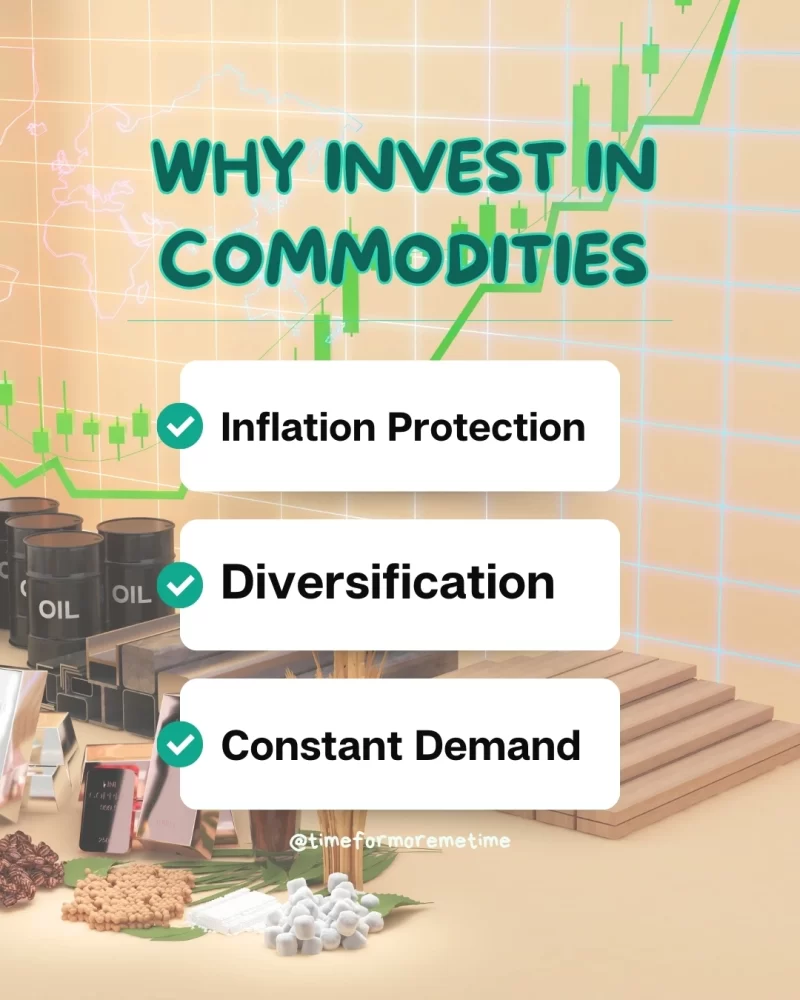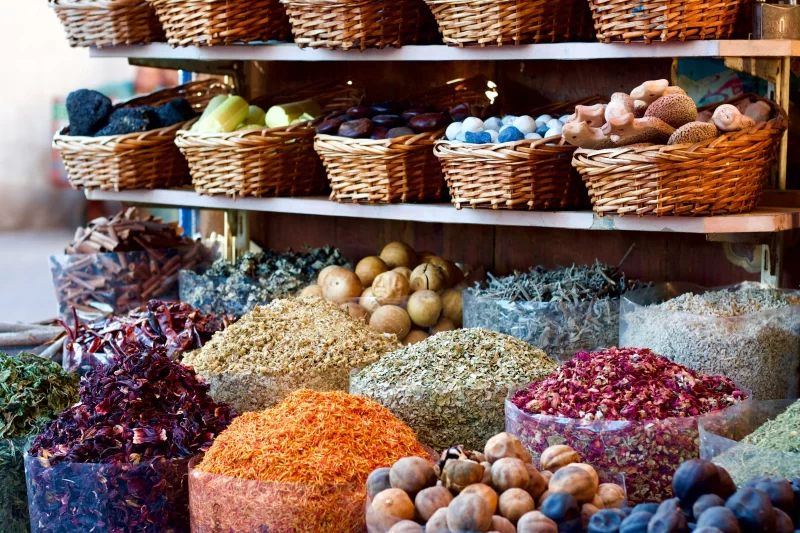Commodities are real, physical goods—like gold, coffee, or wheat—that you can invest in. When it comes to investing, the real question is how to invest in them successfully and make money. I’ll cover that in this post. Let’s get started!
What Are Commodities
Commodities are basic goods that people use every day, such as crude oil, rice, and cotton. These raw materials are essential to the global economy. They are traded in large quantities and used to produce everyday products like gasoline, food, and clothing.
Commodities are bought and sold in the commodities market, where prices are determined by supply and demand. And just like with other potential investment opportunities, investing in commodities involves risks, including price volatility and potential loss.
How Do Commodities Work
Commodities are bought and sold in markets where prices change based on supply and demand. When a commodity is in high demand but has limited supply, its price goes up. On the other hand, if there is more supply than demand, the price usually goes down. These price changes happen every day and are monitored on global exchanges.
Investing in commodities involves capitalizing on these price fluctuations. The basic principle is to profit from price changes—buying low and selling high is one approach, but traders may also use other strategies depending on their goals and market conditions.
With this basic concept, you can invest in and profit from commodities through several ways:
- Futures: A futures contract allows you to agree to buy or sell a commodity at a specific price on a future date. Some individual investors don’t take delivery of the actual goods—they trade contracts for profit. Many contracts are closed or settled in cash before expiration, meaning you never have to handle the commodity itself.
- Stocks: You can invest in companies that produce or process commodities. When you buy stocks, you own a portion of the company and may receive dividends based on its earnings.
- ETFs (Exchange-Traded Funds): These funds aim to track the price of a commodity or a group of commodities, using methods such as holding the physical commodity, investing in futures contracts, or owning shares of commodity-producing companies.
These are some of the most common ways to invest in commodities, though other options are available too. Before you start investing, it’s important to understand the different types of commodities you can invest in.
What Are The Types Of Commodities

Commodities are typically divided into two main types based on their origin and use:
- Hard Commodities: These are natural resources that are mined or extracted, like oil, gold, and natural gas. Their prices are often influenced by geopolitical events, natural disasters, or supply chain disruptions.
- Soft Commodities: These are agricultural goods that are grown or raised, such as wheat, corn, coffee, cattle, and hogs. Their prices often fluctuate with the seasons, weather, and changes in global food demand.
Understanding these categories helps you anticipate price movements and choose commodities that align with your investment goals.
Where You Can Invest In Commodities
Commodity markets, accessed through electronic trading platforms, are where traders buy and sell contracts for commodities like oil, gold, or corn. These markets play a key role in determining global prices based on supply and demand dynamics.
Why You Should Trade Commodities

Trading commodities can be a profitable investment if timed correctly. Commodities, such as food, energy, and metals, are vital to the global economy, but their prices can be unpredictable. Factors like economic conditions, geopolitical tensions, weather events, and supply chain disruptions can lead to price fluctuations, making timing essential for successful trading.
Many investors use commodities to protect their money from inflation. When inflation goes up and prices rise, the value of many commodities also tends to go up. By investing in commodities, the value of your investment can increase, allowing you to make a profit and effectively safeguard your buying power against inflation.
Additionally, trading commodities allows for diversification. Diversification means spreading your investments across different assets to reduce risk. If you invest all your money in commodities and they lose value, you could face significant losses. However, by also investing in bonds and stocks, you can cushion the impact of losses in any one area.
When Is The Best Time To Trade Commodities
Timing can impact trading results, but it’s important to pair it with thorough market research and a clear investment strategy. The best time to trade depends on the specific commodity, your investment approach, and the factors that influence its prices.
Here are some key factors to watch for when trading different types of commodities:
- Energy Commodities: Prices can change due to geopolitical events, seasonal demand, and shifts in production levels.
- Metals: Prices are affected by industrial demand, economic conditions, and currency fluctuations.
- Agricultural Products: Prices can vary based on weather conditions, harvest yields, and global supply and demand trends.
Gaining advanced insights and improving your ability to predict when these factors will occur can increase your chances of making a profit from commodity investing.
Conclusion
Investing in commodities is ideal for active and experienced traders. It can help you make profits and enhance your diversified investment portfolio. Start with small investments, remain consistent, and stay alert to market changes.
Ready to learn more about finance? Explore more beginner-friendly guides, follow us on social media, and check out our YouTube channel!
Source
- Photo: Unsplash: Nikhita Singhal





